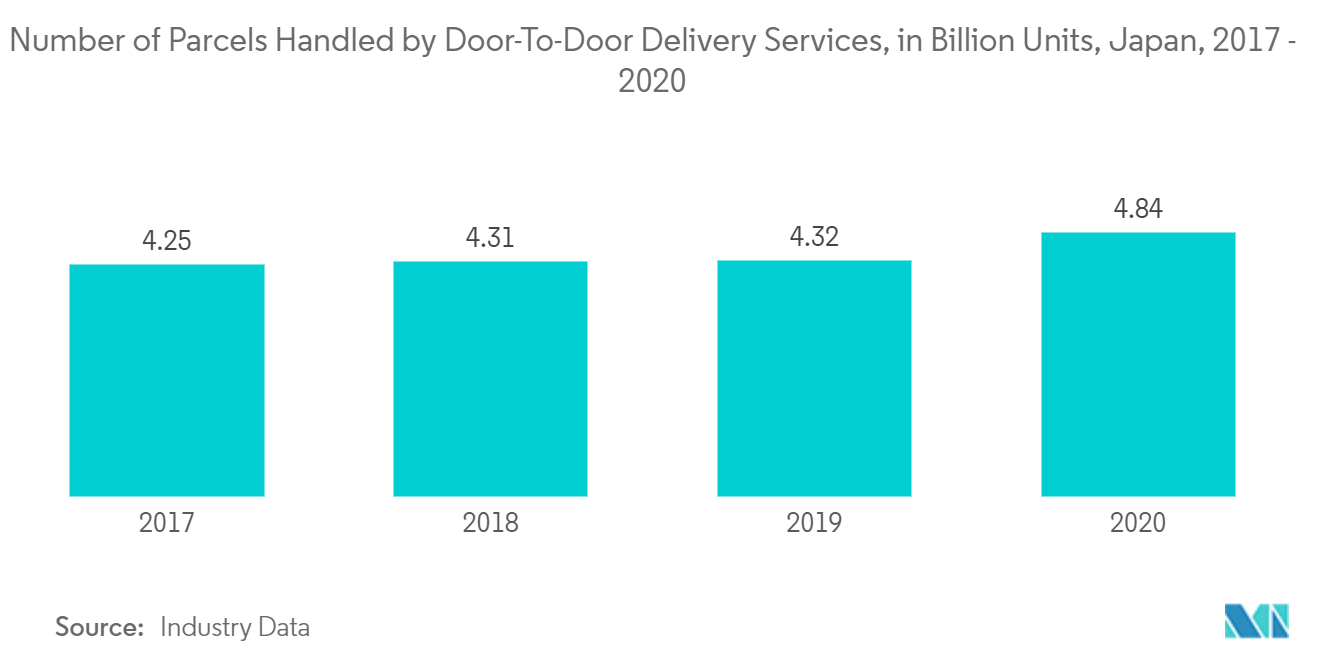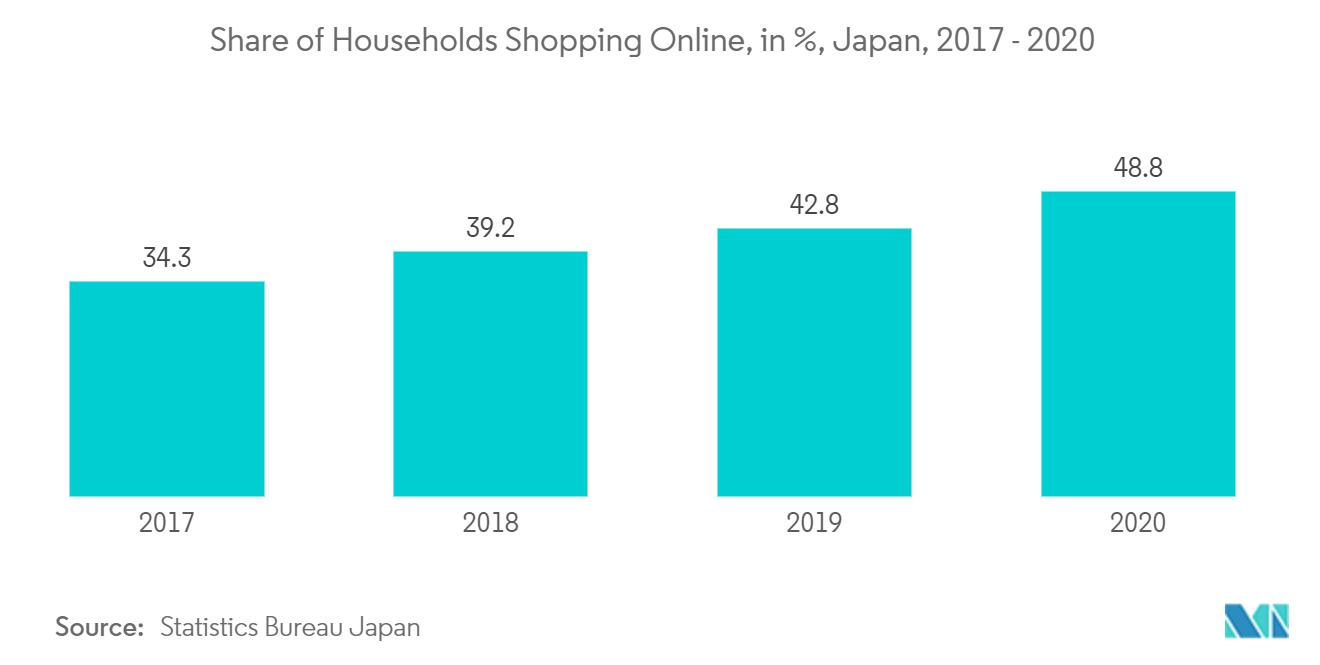Market Trends of Japan Domestic Courier, Express, and Parcel (CEP) Industry
This section covers the major market trends shaping the Japan Domestic Courier Express & Parcel Market according to our research experts:
Increase in Parcel Volumes Fueling the CEP Market’s Growth
In the fiscal year 2020, the number of parcels handled by door-to-door delivery services in Japan reached a record high of 4.84 billion packages. Three service providers dominated this market, accounting for more than 90% of the traffic.
In the fiscal year 2020, Yamato Transport's TA-Q-BIN parcels were the leading door-to-door parcel delivery service in Japan and accounted for almost 43% of all parcels handled via trucks. Hikyaku Express came in second place, reaching a share of slightly over 28%.
All major carriers in the Japanese parcel market (courier and mail) reported an increase in sales in 2020. According to data from the Ministry of Land, Infrastructure, Transport, and Tourism, the total shipment volume of courier and mail services increased by 1% year-on-year, while those of courier services alone increased by 12% year-on-year.
The strong growth of courier services is due to the increase in electronic commerce. It was further accelerated by changes in consumer behavior due to the COVID-19 pandemic. Global economic uncertainty and supply chain problems are accelerating the surge in online shopping and delivery.

E-commerce Growth Driving the Market
Japan is the world's third-largest economy, with a GDP of USD 5 trillion. GDP per capita in 2021 was USD 42,927, with a projected increase to USD 51,620 by 2026. Japan is the world's fourth-largest e-commerce market, behind the United Kingdom, China, and the United States.
The Ministry of Internal Affairs and Communications conducts monthly surveys of Japanese shoppers' online expenditures and services, with a recent report showing a 13.7% increase from January 2018 to January 2020, while households' online shopping increased from 36.3% to 42.8%.
There were 117.4 million internet users in Japan, and internet penetration was at 93% as of January 2021. Internet penetration in Japan was the highest in the age groups 20-59 (all over 97%), with 60-69-year-olds at 90.5%, and dropping slightly to 74% in the following age group (70-79). Smartphone penetration was 82% overall, with 20-29-year-olds having the highest penetration at 93%.
E-commerce growth in the market is estimated to be 6.24% per annum, with a market value of USD 143 billion by 2025. Food and Personal Care was the largest segment, worth USD 28 billion in 2021, followed by Fashion and Beauty (worth USD 25 billion), Toys, DIY, and Hobbies (worth USD 21 billion), and Electronics and Media (worth USD 18.9 billion).
M-commerce is popular in Japan, with revenue increasing year-on-year from USD 9 billion in 2010 to USD 41.5 billion in 2019. In 2021, m-commerce accounted for 45.5% of all e-commerce sales.

